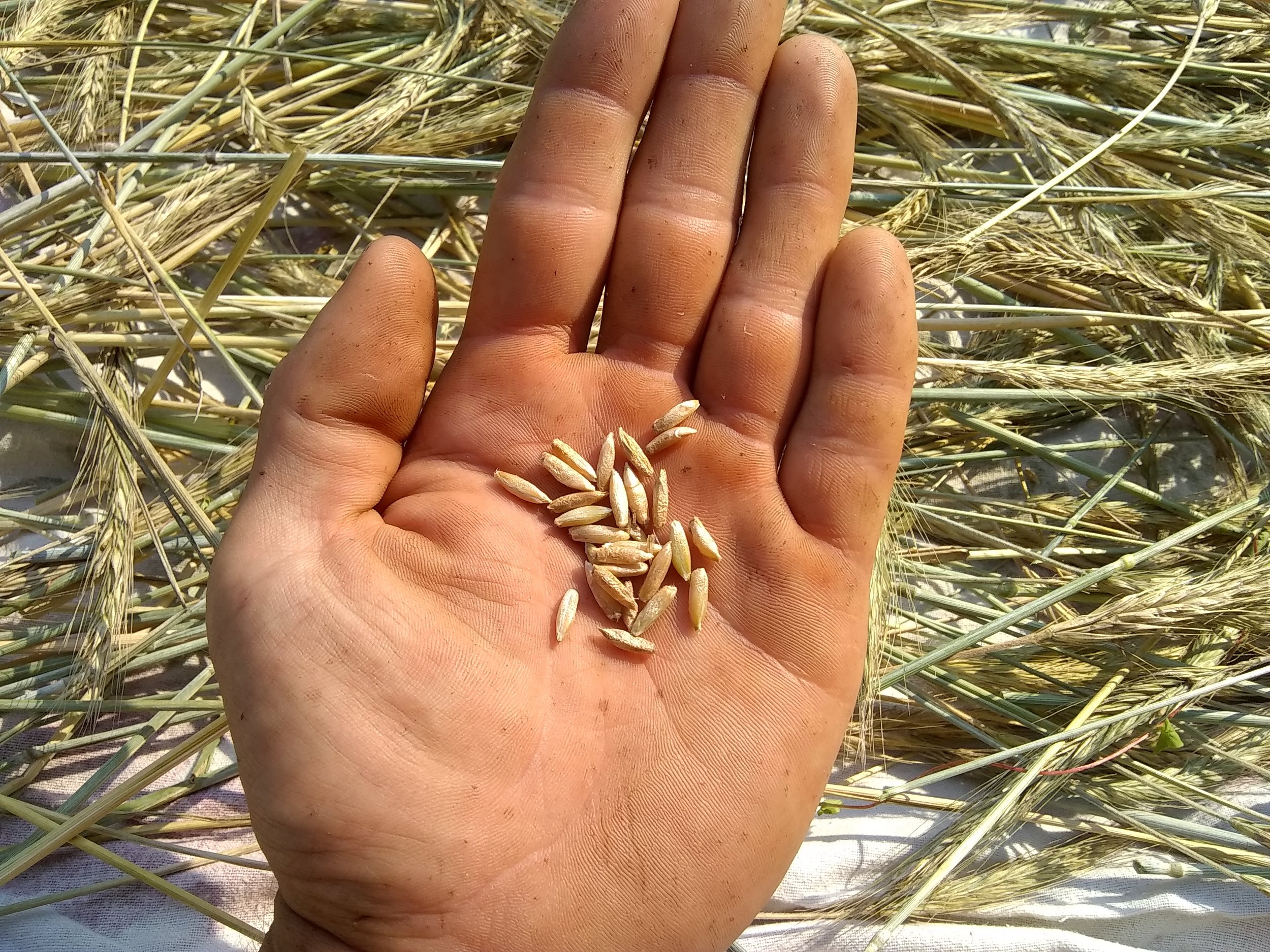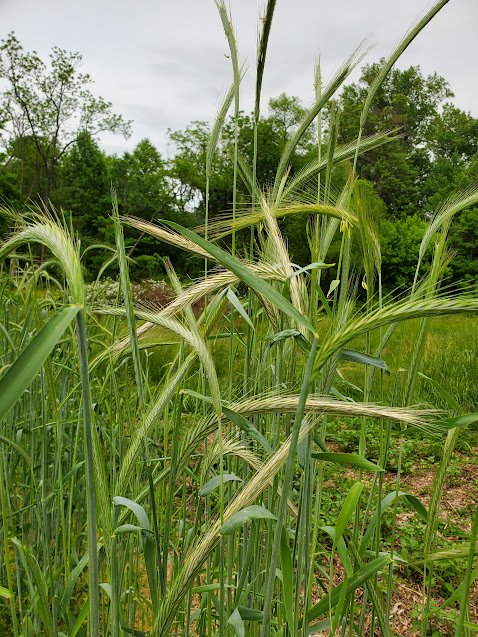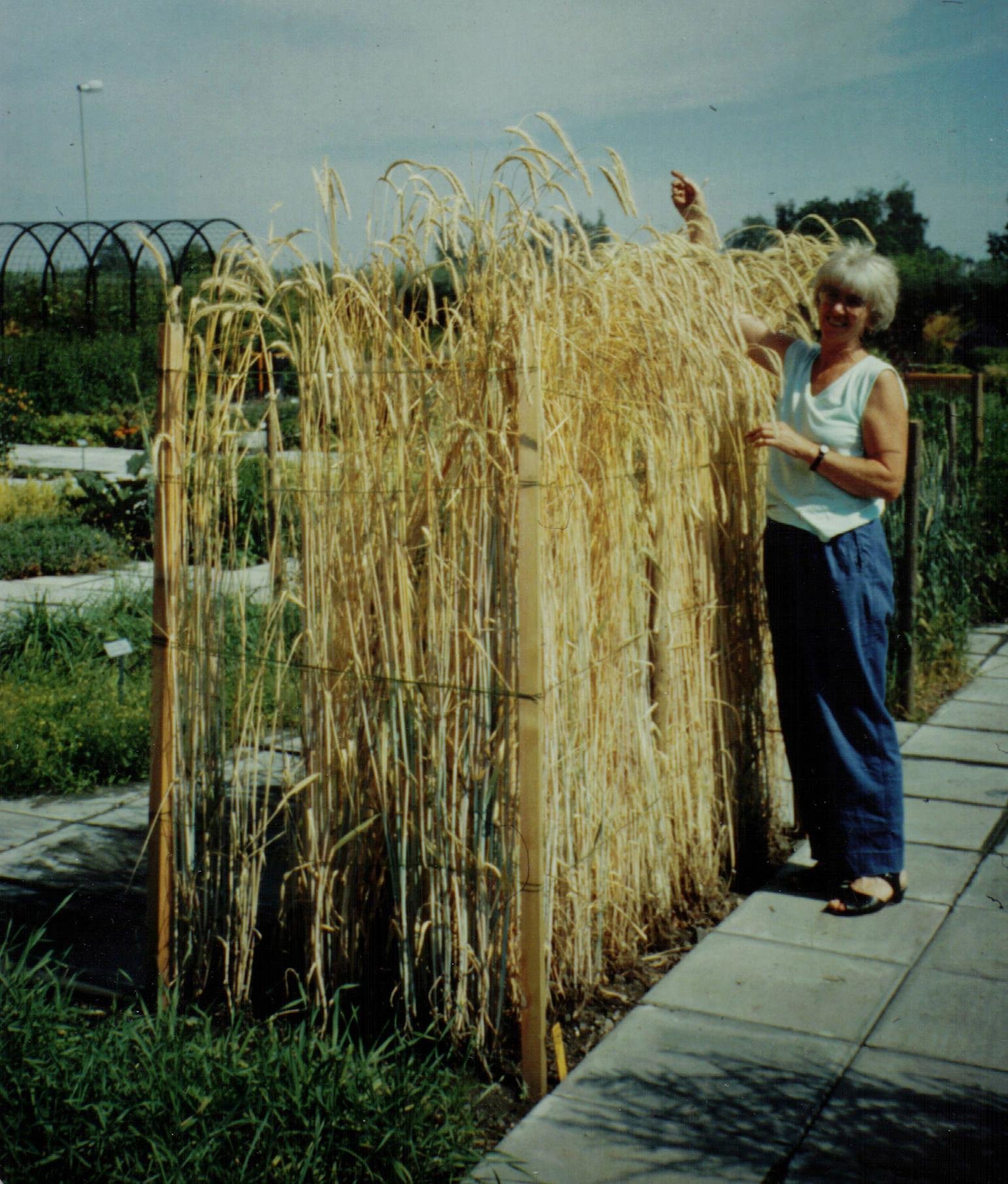Heritage Rye
Over the last few years I’ve had the pleasure of collecting and growing out a few different heritage rye varieties. Each variety has been grown on separate sites or in alternate years to avoid cross-pollination and maintain the heirloom genetics.
Svedjerug — this rye was re-discovered by Per Martin Tvengsberg in the 1970s from a Finnskogen family in southern Sweden, who up until the early 20th century were still practicing a form of slash-and-burn swidden agriculture on their farm, a method known in Finland as “kaski.” This heritage Finnish rye descends from stock which has been kept by the Savo-Karelian culture of the Baltic dating back many centuries. I originally received the seed from Johan Swärd of Aschim Vestre in Norway. This variety of rye is incredibly productive, yielding 5,000 fold, and some say 10,000 fold from its tillering stalks. For best results sow 8-12” apart, after the autumn equinox, and let it overwinter to bear grain the following summer.
Sangaste — this variety comes from Estonia, c. 1875. It was bred by the “Count of Rye,” Friedrich Georg Magnus von Berg who in turn utilized some of the best and most ancient sources he could find. This variety produces lovely, long grain heads. Does well in my mid-Atlantic climate as a winter rye.
Wauldstauden — this variety comes originally from Joseph Holzer, the son of Sepp Holzer, who popularized this variety having written about it in his permaculture books. Like the svedjerug, this is a heritage variety of rye from the Austrian Alps that was traditional sown into slash-and-burn swiddens after spruce was cleared. Hence it’s other descriptive name brandenroggen, meaning “fire rye.”
Over the last few years I’ve had the pleasure of collecting and growing out a few different heritage rye varieties. Each variety has been grown on separate sites or in alternate years to avoid cross-pollination and maintain the heirloom genetics.
Svedjerug — this rye was re-discovered by Per Martin Tvengsberg in the 1970s from a Finnskogen family in southern Sweden, who up until the early 20th century were still practicing a form of slash-and-burn swidden agriculture on their farm, a method known in Finland as “kaski.” This heritage Finnish rye descends from stock which has been kept by the Savo-Karelian culture of the Baltic dating back many centuries. I originally received the seed from Johan Swärd of Aschim Vestre in Norway. This variety of rye is incredibly productive, yielding 5,000 fold, and some say 10,000 fold from its tillering stalks. For best results sow 8-12” apart, after the autumn equinox, and let it overwinter to bear grain the following summer.
Sangaste — this variety comes from Estonia, c. 1875. It was bred by the “Count of Rye,” Friedrich Georg Magnus von Berg who in turn utilized some of the best and most ancient sources he could find. This variety produces lovely, long grain heads. Does well in my mid-Atlantic climate as a winter rye.
Wauldstauden — this variety comes originally from Joseph Holzer, the son of Sepp Holzer, who popularized this variety having written about it in his permaculture books. Like the svedjerug, this is a heritage variety of rye from the Austrian Alps that was traditional sown into slash-and-burn swiddens after spruce was cleared. Hence it’s other descriptive name brandenroggen, meaning “fire rye.”
Over the last few years I’ve had the pleasure of collecting and growing out a few different heritage rye varieties. Each variety has been grown on separate sites or in alternate years to avoid cross-pollination and maintain the heirloom genetics.
Svedjerug — this rye was re-discovered by Per Martin Tvengsberg in the 1970s from a Finnskogen family in southern Sweden, who up until the early 20th century were still practicing a form of slash-and-burn swidden agriculture on their farm, a method known in Finland as “kaski.” This heritage Finnish rye descends from stock which has been kept by the Savo-Karelian culture of the Baltic dating back many centuries. I originally received the seed from Johan Swärd of Aschim Vestre in Norway. This variety of rye is incredibly productive, yielding 5,000 fold, and some say 10,000 fold from its tillering stalks. For best results sow 8-12” apart, after the autumn equinox, and let it overwinter to bear grain the following summer.
Sangaste — this variety comes from Estonia, c. 1875. It was bred by the “Count of Rye,” Friedrich Georg Magnus von Berg who in turn utilized some of the best and most ancient sources he could find. This variety produces lovely, long grain heads. Does well in my mid-Atlantic climate as a winter rye.
Wauldstauden — this variety comes originally from Joseph Holzer, the son of Sepp Holzer, who popularized this variety having written about it in his permaculture books. Like the svedjerug, this is a heritage variety of rye from the Austrian Alps that was traditional sown into slash-and-burn swiddens after spruce was cleared. Hence it’s other descriptive name brandenroggen, meaning “fire rye.”


